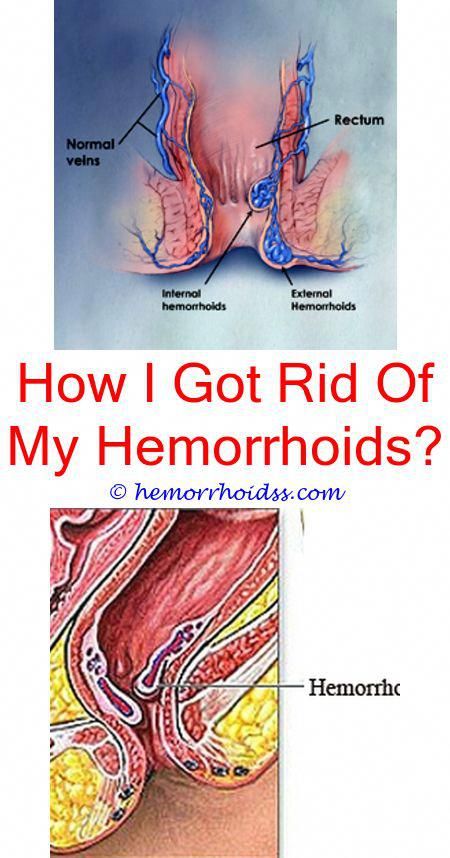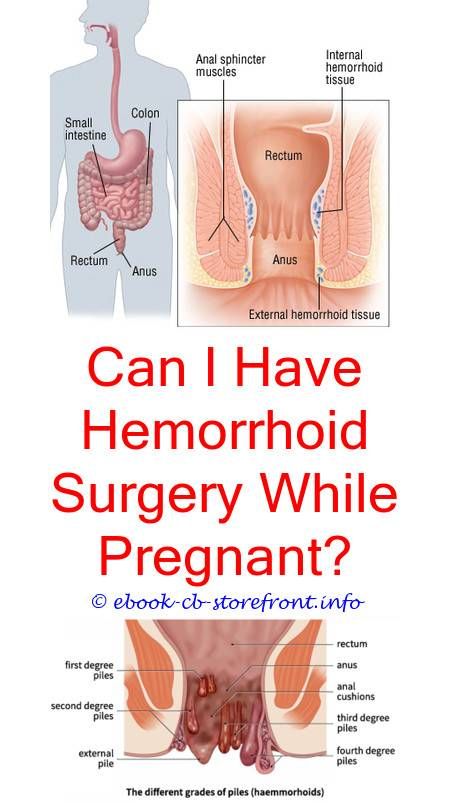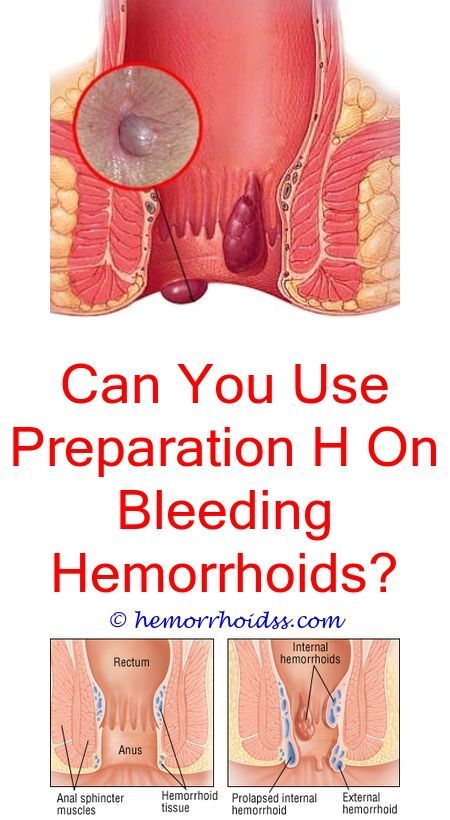Stapled Hemorrhoidectomy For Prolapsing Hemorrhoids
Stapled hemorrhoidectomy is the newest addition to the armamentarium of surgical internal hemorrhoid procedures. It has several aliases, including Longo’s procedure, the procedure for prolapse and hemorrhoids , stapled circumferential mucosectomy, and circular stapler hemorrhoidopexy.
Stapled hemorrhoidectomy is mostly used in patients with grade III and IV hemorrhoids and those who fail prior minimally invasive treatments. During stapled hemorrhoidectomy, a circular stapling device is used to excise a circumferential ring of excess hemorrhoid tissue, thereby lifting hemorrhoids back to their normal position within the anal canal.
Stapling also disrupts hemorrhoid blood supply. Studies have suggested that stapled hemorrhoidectomy results in less postoperative pain and shorter recovery compared with conventional surgery, but a higher rate of recurrence. Frequency of complications is similar to that following standard hemorrhoidectomy.
Stapled Hemorrhoidectomy
Source: Hemorrhoids:By Andrea C. Bafford, M.D. and Ronald Bleday, M.D . Version 20. Knol. 2008 Jul 28 , Creative Commons Attribution 3.0 License
Whom Do Hemorrhoids Affect
Although most people think hemorrhoids are abnormal, almost everyone has them. Hemorrhoids help control bowel movements. Hemorrhoids cause problems and can be considered abnormal or a disease only when the hemorrhoidal clumps of vessels enlarge.
Hemorrhoids occur in almost everyone, and an estimated 75% of people will experience enlarged hemorrhoids at some point. However only about 4% will go to a doctor because of hemorrhoid problems. Hemorrhoids that cause problems are found equally in men and women, and their prevalence peaks between 45 and 65 years of age.
Whats The Procedure Like
Hemorrhoidectomy takes place in a hospital setting. Its usually an outpatient procedure, but in some cases, it may require an overnight stay.
Pre-op instructions will advise you when to stop eating, which is usually 6 to 8 hours before surgery. You wont be able to drive immediately, so be sure to arrange transportation home.
An IV will be inserted into your arm for medications to prevent infection, swelling, and bleeding. Youll need either general anesthesia or local anesthesia with sedation to help you sleep through the procedure.
Once youre asleep, the surgeon will insert a scope into the anal canal for closer examination of internal hemorrhoids. Theyll then cut the hemorrhoidal tissue with a scalpel or laser and close the wound with dissolvable sutures. This is called a closed hemorrhoidectomy.
In some cases, such as when theres a high risk of infection or the area is very large, the incision isnt sutured. This is called an open hemorrhoidectomy.
Another procedure, called hemorrhoidopexy, is somewhat less involved than hemorrhoidectomy. The surgeon uses staples to block blood flow, remove excess tissue, and lift hemorrhoids into a better position. This procedure comes with a greater risk of recurrence and rectal prolapse.
Once the surgeon is done, youll be moved to a recovery area where your vital signs will be monitored for several hours.
- bruising
You May Like: Why Do Hemorrhoids Hurt So Bad
Hemorrhoid Home Remedies: Warm Sitz Bath
A sitz bath refers to sitting in a few inches of warm water three times a day for 15 to 20 minutes. A sitz bath may help decrease the inflammation of hemorrhoids. Drying off the anal area completely after each sitz bath is important for minimizing moisture that irritates the skin surrounding your rectal area.
What Are Internal Hemorrhoids

While external hemorrhoids occur just outside the anus, internal hemorrhoids are swollen areas of tissue just inside the rectum. Although they typically lack the pain often associated with their external counterparts, they are more likely to bleed. In fact, blood on the toilet paper during a bowel movement is sometimes the only symptom of internal hemorrhoids.
Unfortunately, though, they can also become so inflamed that they prolapse out through the anus causing more serious symptoms. When protrusion occurs, an intense itching often follows thanks to a condition known as pruritus ani. Scratching, scrubbing or wiping to relieve the itching usually just leads to further irritation, making the situation worse.
Also Check: What Do You Do For Hemorrhoids
When Hemorrhoid Surgery May Be Necessary
Very few people fewer than 10 percent of all adults who see a doctor because of symptomatic hemorrhoids will require a surgical operation.
Surgery to remove hemorrhoids is called a hemorrhoidectomy.
Your doctor may recommend a hemorrhoidectomy if:
- You have large external hemorrhoids
- You have both internal and external hemorrhoids
- An internal hemorrhoid has prolapsed
In a hemorrhoidectomy, the doctor makes a small incision to remove the hemorrhoid and surrounding tissue before closing the wound with stitches.
A hemorrhoidectomy is performed in an operating room and can be done under general anesthesia, in which you are unconscious and unable to feel pain.
It can also be done with a spinal anesthetic block while you are awake , or with a combination of relaxing and sedating drugs given intravenously and a local anesthetic injected around the anus.
Hemorrhoidectomy is associated with postoperative pain, but the procedure is successful for 95 percent of cases.
More recently, another option aimed at avoiding the postoperative pain of a hemorrhoidectomy has become available, called a stapled hemorrhoidopexy. A circular stapling device pulls the hemorrhoidal tissue upward and to its normal position, stapling it in place. The staples eventually fall out over time.
There are many options for the treatment of hemorrhoids. Its best to discuss the benefits and risks of each of these with your doctor in order to come up with the treatment plan that is best for your particular case.
When Do Hemorrhoids Require Medical Intervention
Your hemorrhoids can be an embarrassing topic to discuss with anyone, even your doctor. But hemorrhoids are common and affect 5% of adults in the United States every year, according to the National Institute of Diabetes and Digestive and Kidney Diseases. Its estimated, in fact, that as many as three in four adults will experience problems with hemorrhoids at some point in their lives.
Though you can find many treatments for hemorrhoids at your local pharmacy, home remedies dont help everyone. At Rivas Digestive Center, located in Hollywood, Florida, our expert gastroenterologist, Dr. John Rivas, wants you to know when its time to get medical help for your hemorrhoids.
Also Check: Can Hemorrhoids Affect Your Prostate
Medical Procedures For Hemorrhoids That Wont Go Away
If hemorrhoids don’t go away with home treatments, medical procedures may be necessary.
If you visit your doctor with painful external hemorrhoids those located around the outside of the anus that are visible from the outside your doctor may offer to excise them during the office visit. You will be given a shot with a local anesthetic to numb the area before the procedure.
Doctor’s office procedures for internal hemorrhoids those located inside the rectum may include:
Rubber Band Ligation This is the most commonly performed hemorrhoid procedure in the United States. In this procedure, which can be used for grades 1, 2, and 3 internal hemorrhoids , the doctor places a small rubber band around the base of the hemorrhoid, which can be done when your doctor performs an anoscopy examination to better visualize the hemorrhoids. The rubber band cuts off the hemorrhoid’s blood supply.
The procedure typically causes the hemorrhoid to shrink and fall off within about a week, though several short visits to your doctor may be necessary to completely get rid of the hemorrhoid. Minor bleeding and a feeling of pressure may occur, but this can usually be alleviated with OTC pain relievers. This procedure is not associated with significant recovery time.
RELATED: 4 Signs Your Hemorrhoids Warrant a Doctors Visit
What No One Tells You About Hemorrhoid Surgery Recovery Time
Friday, May 20th, 2016 | Written by Premier Hemorrhoid Treatment Center Staff
Are you suffering from hemorrhoids but fear that a treatment procedure will be painful and the recovery time will be long? Youre not alone. Nearly half of the U.S. population has hemorrhoids at some point in their lifetime, and many of them avoid seeking treatment because of fear or embarrassment. But at Premier Hemorrhoid Treatment Center of Knoxville, we put our patients quickly at ease by sharing some good news upfront.
The Good News
First of all, hemorrhoid surgery is no longer always surgery.
Many people have heard tales of horror about someone they knew who had hemorrhoid surgery. In the past, the most prevalent treatment for hemorrhoids was hemorrhoidectomy, or the surgical removal of hemorrhoids. This procedure typically resulted in a painful, weeks-long recovery time. However, hemorrhoidectomies are now necessary only in the most severe cases. Technological developments have led to the discovery of effective nonsurgical treatments for hemorrhoids, such as laser infrared coagulation. These treatments provide lasting relief without the need for stitches or surgery and are usually performed right in the office in just minutes.
Theres no down-time.
No referral is needed and treatment is covered by insurance
You May Like: How To Tell If You Have External Hemorrhoids
Can Piles Cause Cancer
Not only about their life, but there are also some people wonder if stress can cause hemorrhoids or not. One that is not suffering from this painful health problem is lucky enough. What to do is preventing the disease. But what if you are already with hemorrhoids? Do you ever think or question about can you die from hemorrhoids?
Hemorrhoid Banding Is Virtually Painless
Your doctor will use a special scope to see the hemorrhoids and a special tool to put a tiny rubber band on the base of the hemorrhoid. There are no nerves at the base of a hemorrhoid, so banding does not cause you any pain. The rubber band will cut off the blood supply to the hemorrhoid, causing it to shrink and fall off within one to two weeks. You probably wonât even notice it happening.
Read Also: How To Get Rid Of My Hemorrhoids
How To Get Rid Of Hemorrhoids: Diagnosis And Treatments
Most individuals who have hemorrhoids discover them by either
- feeling the lump of an external hemorrhoid when they wipe themselves after a bowel movement,
- noting drops of blood in the toilet bowl or on the toilet paper, or
- feeling a prolapsing hemorrhoid after bowel movements.
With a history of symptoms, a physician can begin diagnosis on the basis of a careful examination of the anus and anal area. Although the physician should try his or her best to identify the hemorrhoids, it is perhaps more important to exclude other causes of hemorrhoid-like symptoms that require different treatment such as
- anal fissures,
This is true whether or not hemorrhoids are found during anoscopy.
Hemorrhoidal Artery Ligation And Recto Anal Repair

Hemorrhoidal Artery Ligation and Recto Anal Repair is a new procedure in which a miniature Doppler sensor is inserted in the anus to detect the arteries supplying blood to hemorrhoids.
The surgeon can pinpoint the arteries supplying the hemorrhoids and can tie them off to cut the blood supply. The hemorrhoids are reduced almost immediately and within weeks, are no longer noticeable. The procedure is effective and virtually painless.
Also Check: How Long To Heal External Hemorrhoids
When Should You Get Hemorrhoid Surgery
Your healthcare provider may suggest surgery if you have large hemorrhoids, both internal and external hemorrhoids, or bleeding and pain that isn’t managed with other non-surgical treatments. With small hemorrhoids, your healthcare provider will usually suggest lifestyle changes first, such as eating a high-fiber diet and drinking lots of water.
Address And Fix The Cause Of Your Hemorrhoids
How to Stop Hemorrhoids In their Tracks
There are several things you can do to get fight back against your hemorrhoids.
Quick Recap:
Recommended Reading: Can Diarrhea Cause Hemorrhoids To Flare Up
When To Consider Hemorrhoid Removal Surgery
Your doctor may decide that you are a good candidate for hemorrhoid removal surgery if:
-
You have combined internal and external hemorrhoids.
-
You have grade 3 or 4 prolapsed internal hemorrhoids. Prolapse means that the hemorrhoids are dropping, or slipping out of the anus. Grade 3 prolapse occurs with a bowel movement, but you can manually push the hemorrhoid back through your anus. A grade 4 prolapse cannot be put back.
-
You have additional anorectal conditions that require surgery.
-
Youve had minimally invasive procedures or other treatments that have not corrected the problem.
-
You have significant amounts of bleeding from your hemorrhoids.
-
You have a strangulated internal . This occurs when the anal sphincter traps the hemorrhoid and cuts off blood supply to the tissue.
- You have a hemorrhoid with that recur after less invasive treatments.
Can Hemorrhoids Be Prevented Or Avoided
Just about everyone has hemorrhoids at some time. But some things may make you more likely to get them. People whose parents had hemorrhoids may be more likely to get them. Pregnant women often get hemorrhoids because of the strain from carrying the baby and from giving birth. Being very overweight or standing or lifting too much can make hemorrhoids worse.
Don’t Miss: What Can I Do For Bleeding Hemorrhoids
What Causes Internal And External Hemorrhoids And Simple Ways To Treat Them
Hemorrhoids are usually caused by increased pressure due to pregnancy, being overweight, or straining during bowel movements. By midlife, hemorrhoids often become an ongoing complaint. By age 50, about half the population has experienced one or more of the classic symptoms, which include rectal pain, itching, bleeding, and possibly prolapse . Although hemorrhoids are rarely dangerous, they can be a recurrent and painful intrusion. Fortunately, there’s a lot we can do about hemorrhoids.
Procedure For Prolapse And Hemorrhoids
PPH is also called a stapled hemorrhoidectomy. The doctor will use a stapler-like device to reposition the hemorrhoids and cut off their blood supply. Without blood, they’ll eventually shrivel and die.
It can treat hemorrhoids that have and have not prolapsed, or slipped down out of the anus.
This procedure moves the hemorrhoid to where there are fewer nerve endings, so it hurts less than a traditional hemorrhoidectomy. You’ll also recover faster and have less bleeding and itching. And there are generally fewer complications.
You May Like: How To Relieve Hemorrhoids At Home
What Should I Eat With Hemorrhoids
Eating whole grains and other foods that are high in fiber can help ease symptoms of hemorrhoids, such as discomfort and swelling. These foods can also help prevent hemorrhoids from forming by making the stool bulky and softening it. This helps you avoid straining, which can lead to hemorrhoids. When you increase your fiber intake, you should do so gradually to lower your risk of having gas.
Classification Of Internal Hemorrhoids:

- Grade 1 – A hemorrhoid is present but only visualized by a doctor with ansocopy or colonoscopy. The hemorrhoid does not extend out the anus.
- Grade 2 – The hemorrhoid extends out of the anus with a bowel movement or with straining. After your BM, the hemorrhoid goes back inside on its own.
- Grade 3 – The hemorrhoid extends out of the anus with a bowel movement or with straining. You have to manually push the hemorrhoid back inside the anus. If you have this, you should seek medical attention, but it is not urgent.
- Grade 4 – A hemorrhoid extends outside the anus and are not able to be manually pushed back inside. If you have this seek medical attention immediately. There are significant potential complications.
Recommended Reading: How To Treat Hemorrhoids Naturally
Symptoms Of Prolapsed Internal Hemorrhoids
Hemorrhoids prolapse when their blood vessels swell and extend from their location in the rectum through the anus. In the anal canal, the hemorrhoid is exposed to the trauma of passing stool, particularly hard stools associated with constipation. The trauma can cause bleeding and sometimes pain when stool passes.
The presence of
- inflammation, and
- constant moisture
can lead to anal itchiness , and occasionally the constant feeling of needing to have a bowel movement. The prolapsing hemorrhoid usually returns into the anal canal or rectum on its own or can be pushed back inside with a finger, but falls out again with the next bowel movement.
Medical Treatment For Your Hemorrhoids
Dr. Rivas develops personalized hemorrhoid treatment plans after completing a thorough examination. The treatments we recommend may depend on the type of hemorrhoids, as well as your symptoms. Initially, we may suggest lifestyle changes to ease your pain, such as increasing your intake of fiber and water to improve bowel movements and sitz baths to alleviate pain and discomfort.
However, when at-home treatments fail, Dr. Rivas may suggest a procedure to destroy or remove your hemorrhoids, such as:
- Rubber band ligation
- Infrared, laser, or bipolar coagulation
- Thrombectomy
Also Check: How To Relieve Internal Hemorrhoids